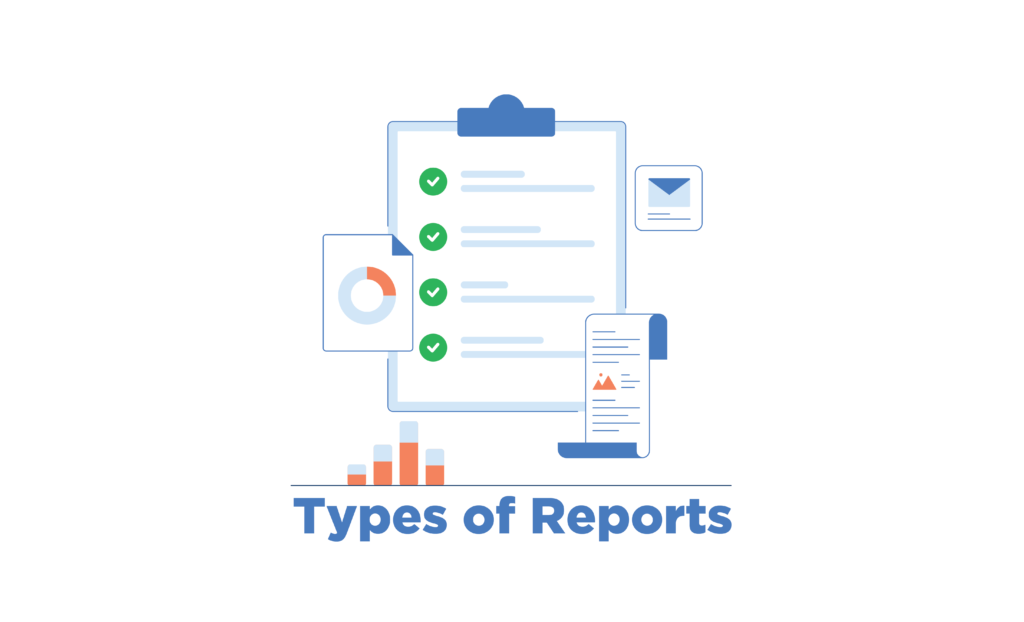Best WooCommerce Reporting and Analytics Plugins + Tips & Guide

overview Overview
Analysis, improvement, and growth. These are the 3 critical stages for any business, be it online or retail for ensuring success. WooCommerce is an extensive eCommerce platform that provides multiple tools to help you run your business smoothly, thus it comes as no surprise that it provides reporting features out-of-the-box. But if you want to analyze advanced metrics, you should look for WooCommerce reporting and analytics plugins.
Having deep insight into your store’s metrics, like which areas need improvement, and which marketing technique is producing more revenue, etc is always a benefit. Because you can further improve your store based on the results and provide your customers with the ultimate shopping experience.
In this article, we are going to list some of the best analytics and reporting plugins for WooCommerce. But first, let’s list the benefits.
Use WooCommerce Page Builder plugins to customize and style your website.
military_tech Our List of Best WooCommerce Reporting and Analytics Plugins
1 Conversion Tracking Pro for WooCommerce
This is one of the best plugins for retargeting your customers. It helps in sending user-triggered events to social media platforms like Facebook, Twitter, Google, and much more. So how it works? When a user visits your site and starts exploring it, they trigger a specific event set by you which helps in collecting conversion data. This data is sent to selected ad platforms from where they are targeted.
With the help of this plugin, you can easily retarget customers through the conversion tracking data it collects when a customer triggers a specific event. The popular platforms it covers are Facebook, Twitter, Google, and Microsoft.
It collects a multitude of information. For instance, through Facebook Ads, you can see who viewed your products, what they searched, purchased, and much more.
2 WooCommerce Google Analytics Pro
With the integration of Google Analytics and WooCommerce, you can get detailed reports about sales, orders, and revenue. It also helps in setting up advanced trigger events which are directly sent to Google Analytics to turn them into actionable data. All you have to do is enable the enhanced eCommerce tracking option on your Google Analytics account and benefit from increased sales and site tracking.
3 Product Sales Report for WooCommerce
This product sale analytic plugin for WooCommerce is used for generating sales reports which can be used as actionable insights and for new marketing campaigns. You can also analyze and monitor your sales to see your business performance. Moreover, it gives you complete control over the reports and what needs to be included, such as you can include/exclude products, categories, dates, etc.
4 WooCommerce Customer History
With this WooCommerce reporting plugin, you can track customer history and see how they browse your site to optimize the user experience and increase conversions. This helps in giving you an insight into your customer’s behavior and their interests. With the data collected, you can further improve your site.
5 Cart Reports
Cart Reports is an abandoned cart plugin for WooCommerce. It provides analyzed and detailed cart reports on the WooCommerce dashboard for easy management and analysis. Moreover, this data is available in the form of lists and divided into many aspects.
This WooCommerce analytics plugin analyzes your customer’s open and abandoned carts to gain insights and manage their business efficiently. It adds a new cart tab on WooCommerce from where you can see all abandoned, converted, opened, and closed carts. Moreover, you can customize the search with filters such as date, month, products, etc.
6 Abandoned Cart Reports for WooCommerce
What’s the one thing every eCommerce business faces, no matter how successful? Abandoned carts! Around 70% of the consumers abandon their carts at the last possible moment. But there is a way you can win them back. This reporting plugin for WooCommerce starts recording when a customer adds a product to the cart to see when they abandon their carts and also what leads to it.
7 KissMetrics
Kissmetrics is another popular WooCommerce reporting plugin that provides you enterprise-level features. It helps you track customers with high average order value and remarket to them. Moreover, you can track and analyze content that is beneficial for your site’s conversion rates. You can also get detailed reports regarding sales, customers, funnels, products, etc.
8 Beeketing
Beeketing is an all-in-one marketing automation tool that consists of unlimited features to optimize every aspect of your website, from cart abandonment to repeat purchases. But the one module we are interested in is product recommendation. To increase average order value, Beeketing enables you to promote products through upsells and cross-sells. Moreover, you can show related products at the cart and checkout page.
9 Metorik
Metorik is an all-in-one analytics plugin for WooCommerce that co-pilots your site and makes sure everything is up to standard. It is easy to set up and provides you with multiple advanced reporting features to run your store smoothly. This plugin helps in segmenting the incoming data with multiple filters for easy management. It also provides detailed reports, send automated and cart recovery emails, export data, and much more. Metorik is thus considered one of the best WooCommerce analytics plugins.
10 Metrilo
Metrilo is one of the best analytics plugins for WooCommerce as it helps you analyze different metrics on your site and grow in your niche. In a nutshell, Metrilo provides analytics, eCommerce CRM, customer retention, and an extensive email marketing system. Everything is ready to use and requires no setup. It also analyzes your store in real-time, provides marketing channel reports, product performance, and much more.
Use Product Vendors plugins for WooCommerce and cater to a wider audience and also increase brand recognition.
auto_graph Benefits of WooCommerce Reporting Plugins

There are countless benefits associated with reporting plugins, let’s look at some key advantages.
I. Introduce New Marketing Strategies
You can’t run a business if you are still using the same old marketing techniques from ages ago. If you want to stand out in this competitive market, you need to get in with the recent trends and techniques. But how to do that? And how to know what’s working or not? Simply by analyzing reports. You can see which campaign is working out for your business, how to improve it, what to change. You can also do A/B testing to analyze multiple techniques at once. Overall, it is the perfect tool for further growing your business and gaining customer attention.
II. Understand your Customers
A successful business is one where customers are valued. The better you understand your customers, the more loyalty and trust increases. One common marketing technique involves segmenting your customers based on their interests, past purchase, lifetime value, search history, and much more. Thus, using analytics plugins, you can use this information to your advantage and discover your target niche, where are they most active, and what do they like.
III. Improve Shopping Experience
Creating the ultimate user experience for your customers is a lot harder than you think. Many factors in your WooCommerce store could potentially be harmful to your business. For example, site navigation. The more cluttered your site is, the harder it would be for customers to explore. Similarly, a complicated checkout experience is sure to result in cart abandonment. Analytics tools help you identify these areas of concern and suggest to you how to change or improve them. Thus, with proper reports, you can improve the user experience greatly.
WooCommerce POS plugins help you sync your online and retail store and also manage backend operations.
analytics Types of Reports

If you are wondering do we really need a reporting and analytics plugin for WooCommerce, then let’s discuss the default WooCommerce reports and what information it relays. Then we can compare it to our customized version.
I. Default Reports
The default WooCommerce reports provide information about general metrics that determine your store performance. The default reports are of 4 types which you can see by going to WooCommerce > Reports tab.
a. Orders
This report gives you an overview of the gross and net sales of your online store. You also get information about the number of orders placed or items purchased. You can also find out the amount of money spent on shipping or refunding orders. Moreover, you can also see the number and worth of coupons used. These reports can be filtered by year, last month, current month, and last 7 days. The Orders report by WooCommerce can also inform about best-selling and freebies items.
b. Customers
In this WooCommerce report, you get information regarding customer sign-ups. You can also compare customer sales and guest sales. Like the orders report, you can filter them within a certain time period. You also get a list of complete customers with all their info such as email address, orders, the total amount spent, and last orders.
c. Stock
The stock report provides information about products that are in stock, out of stock, and most stocked.
d. Taxes
The taxes report provides you information about the amount of tax and sales that were generated by your store. You can view taxes by date or by code.
II. Customized Reports
Although WooCommerce default reports cover all the basic metrics of your online store, there is a lot more than you can analyze and improve over by using WooCommerce reporting and analytics plugins to increase sales and customer satisfaction. Let’s discuss some more metrics that you should include in your reports.
a. Country/State Reports
By adding this metric, you can analyze how many orders and total sales were carried out in a specific country or state. This will help you focus attention on where your customers are most active and improve areas where your sales are lacking.
b. Shipping
The shipping reports will let you know how much you spent on shipping and what your customers are paying. You can also see which shipping carrier is being used most, which method is most effective, etc.
c. Order Status
By adding the order status report in WooCommerce, you can manage and overview all your opened, completed, and canceled orders in one place.
Learn the Best WooCommerce Shipping Practices to improve logistics operation
fact_check Wrap-Up
No business can be successful if you don’t analyze your performance or see if your marketing campaigns are working or not. If you want to compete in this competitive market, you need to use the WooCommerce reporting and analytics plugin to get detailed insights and also improve the user experience. https://www.wookeeper.com/wp-admin/post.php?post=25578&action=edit











